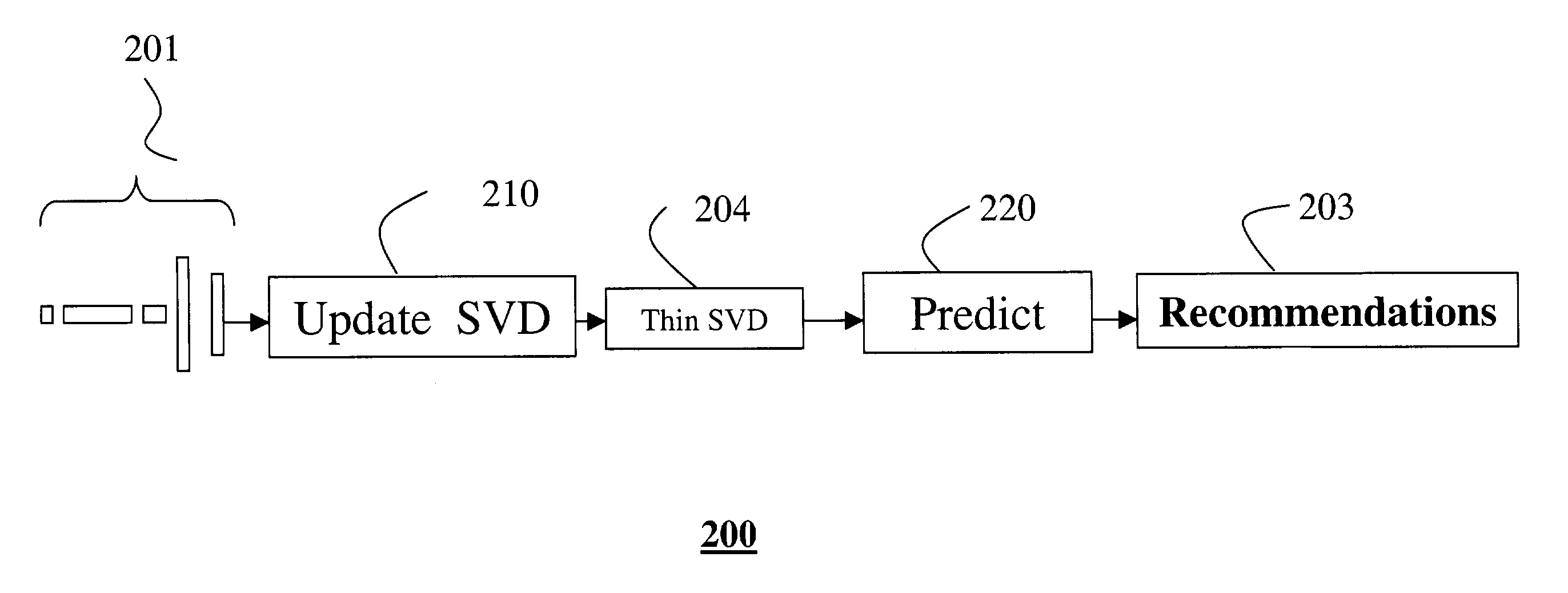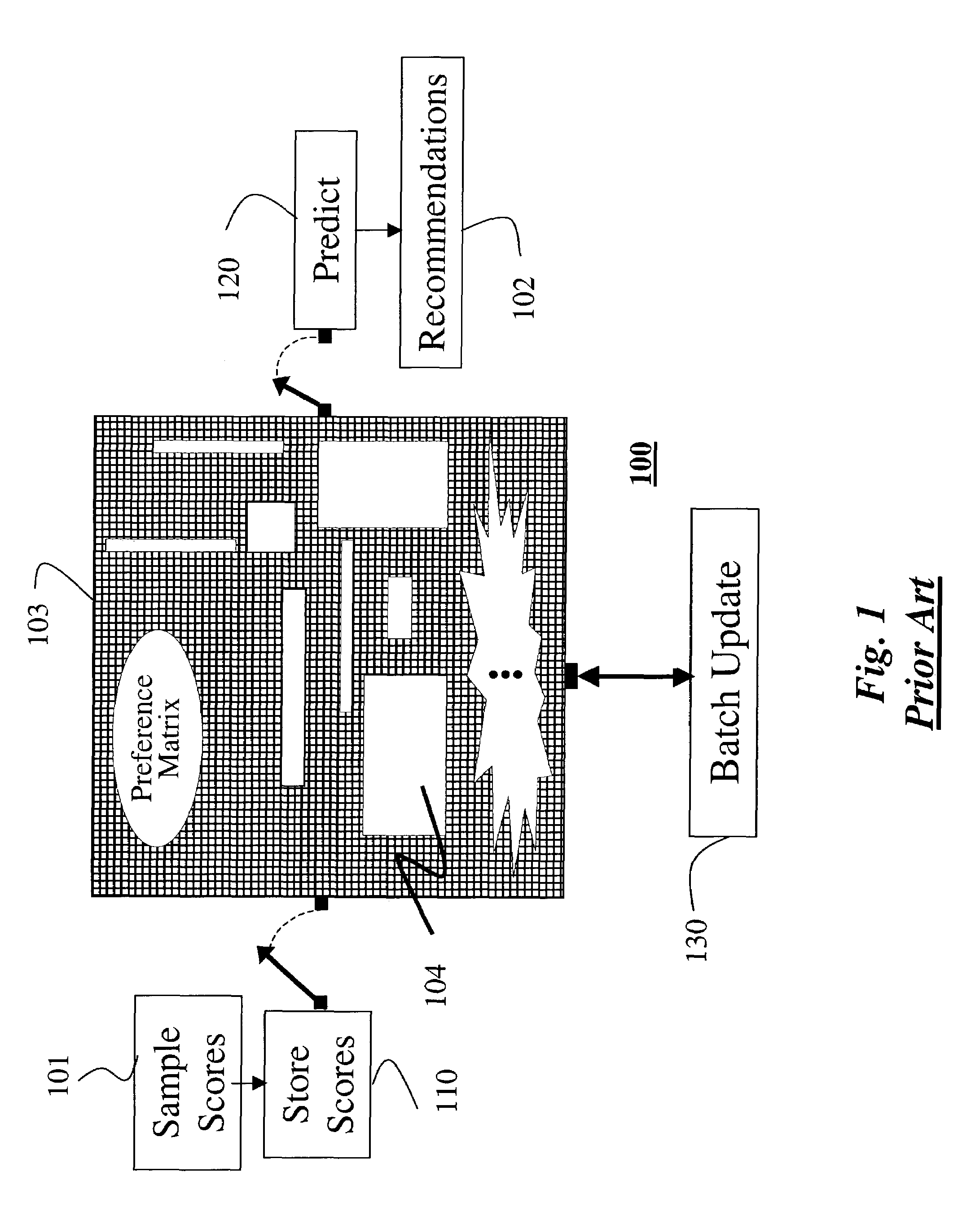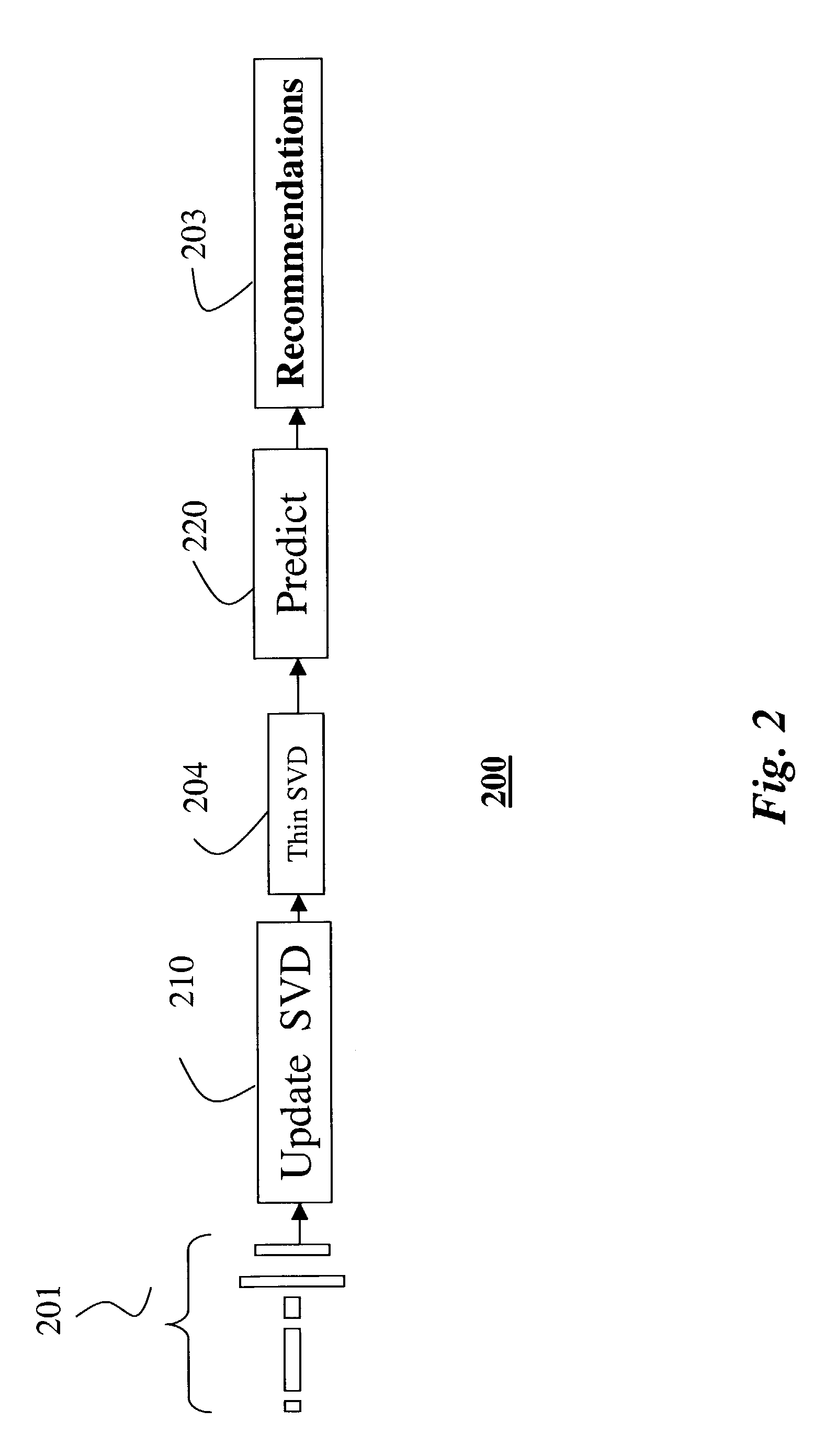On-line recommender system
a consumer recommendation and recommendation system technology, applied in the field of consumer recommendation systems, can solve the problems of requiring caching for only a single consumer's rating, very low time complexity of purely on-line rules, etc., and achieve the effect of superior predictive power and low time complexity
- Summary
- Abstract
- Description
- Claims
- Application Information
AI Technical Summary
Benefits of technology
Problems solved by technology
Method used
Image
Examples
Embodiment Construction
[0029]System Overview
[0030]FIG. 2 shows the overall context of an on-line system and method 200 for revising consumer preferences according to my invention. The system performs what is known in the art as collaborative filtering.
[0031]In no particular order perhaps, random, preference scores are received asynchronously as fragments of ratings 201. Each rating is processed, one at the time, independent of any other ratings, as described below.
[0032]The rating fragments are used to update 210, i.e., add, change or retracted a “thin” SVD 204, in any order. After each rating have been consumed into the SVD, it can be discarded, so that the ultimate size, structure and content of an underlying preference matrix unknown. In fact, my invention does not need to compute or store the underlying matrix, as is done in the prior art.
[0033]My task is to determine a best running estimate of the rank-r SVD 204 of the underlying data matrix, without actually any storing or caching of the fragments o...
PUM
 Login to View More
Login to View More Abstract
Description
Claims
Application Information
 Login to View More
Login to View More - R&D
- Intellectual Property
- Life Sciences
- Materials
- Tech Scout
- Unparalleled Data Quality
- Higher Quality Content
- 60% Fewer Hallucinations
Browse by: Latest US Patents, China's latest patents, Technical Efficacy Thesaurus, Application Domain, Technology Topic, Popular Technical Reports.
© 2025 PatSnap. All rights reserved.Legal|Privacy policy|Modern Slavery Act Transparency Statement|Sitemap|About US| Contact US: help@patsnap.com



